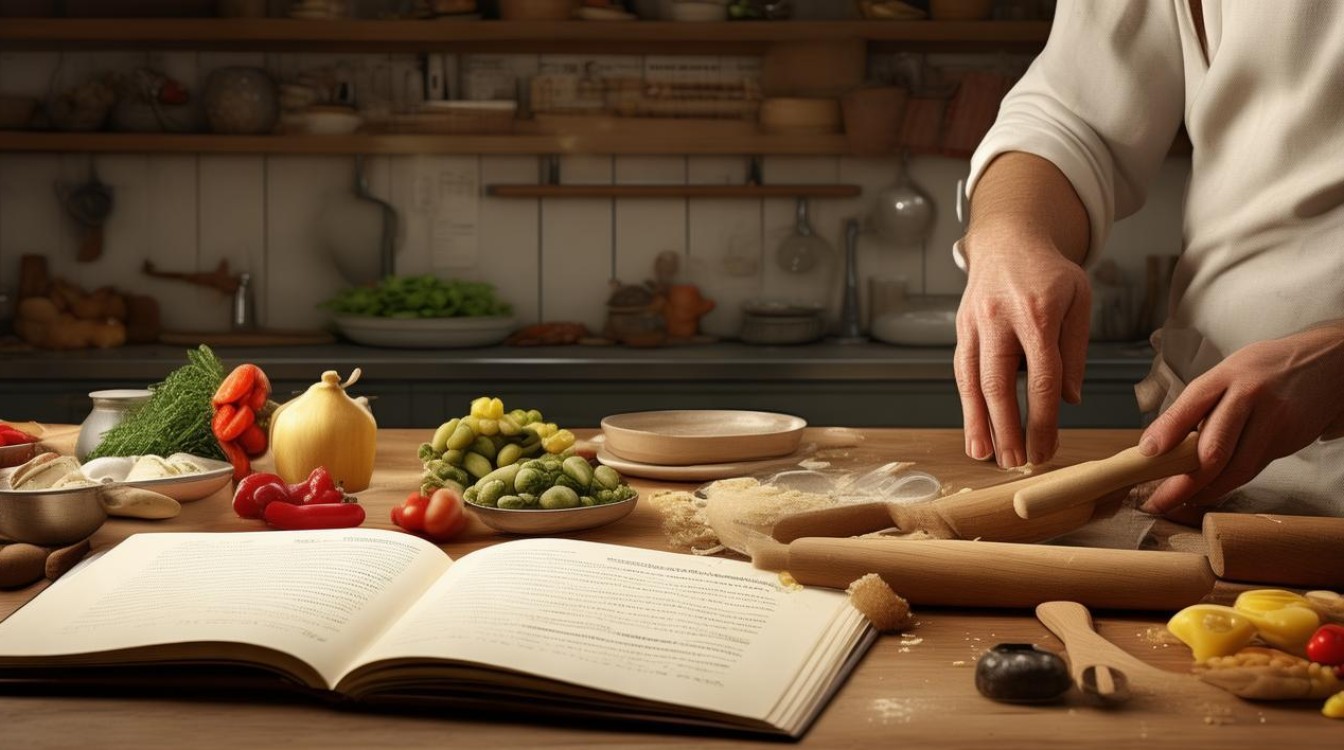Cooking is an art that transcends cultures, and the English language offers a rich vocabulary to describe its various aspects. Whether you're a professional chef, a home cook, or simply someone who enjoys food, understanding these terms can enhance your culinary knowledge. Below is a curated selection of words that share connections with cooking, from techniques and tools to ingredients and flavors.

Culinary Techniques
Sauté
Derived from the French word meaning "to jump," sautéing involves cooking food quickly in a small amount of oil or fat over high heat. This method preserves texture and enhances flavor.
Simmer
A gentle cooking technique where liquids are kept just below boiling point. Simmering allows flavors to meld without overcooking delicate ingredients.
Braise
A slow-cooking method that combines searing and simmering, usually in a covered pot. Tough cuts of meat become tender through braising.
Whisk
A rapid mixing motion used to incorporate air into ingredients, often applied when making sauces, meringues, or whipped cream.
Fold
A delicate mixing technique used to combine light, airy mixtures (like beaten egg whites) with heavier ingredients without deflating them.
Essential Kitchen Tools
Colander
A perforated bowl used for draining liquids from foods like pasta or washed vegetables.
Mortar and Pestle
A traditional tool for grinding spices, herbs, and other ingredients into pastes or powders.
Mandoline
A slicer that produces uniform cuts of vegetables or fruits, essential for dishes requiring precision.
Zester
A tool designed to remove the outer peel of citrus fruits, adding aromatic oils to dishes.
Basting Brush
Used to apply liquids like melted butter or marinades onto food while cooking.
Key Ingredients in Cooking
Aromatics
Ingredients like onions, garlic, and herbs that form the flavor foundation of many dishes.

Umami
A savory taste, often described as the fifth flavor, found in foods like mushrooms, soy sauce, and aged cheeses.
Emulsify
The process of blending two liquids that don’t naturally mix, such as oil and vinegar, to create stable mixtures like mayonnaise.
Reduction
A technique where liquids are simmered until thickened, intensifying flavors for sauces and gravies.
Leavening Agents
Substances like yeast or baking powder that cause dough or batter to rise by producing gas bubbles.
Flavor and Texture Descriptions
Al Dente
An Italian term meaning "to the tooth," describing pasta or vegetables cooked to a firm, slightly chewy texture.
Caramelize
The process of heating sugars until they brown, creating rich, deep flavors in foods like onions or roasted meats.
Crispy
A desirable texture achieved through frying, baking, or toasting, adding contrast to dishes.
Tender
Refers to food that is soft and easy to chew, often the result of slow cooking or marinating.
Zesty
A bright, lively flavor, typically associated with citrus or fresh herbs.
Cooking Styles and Dishes
Stir-Fry
A quick-cooking method where ingredients are tossed in a hot pan with minimal oil, common in Asian cuisine.
Poach
Gently cooking food in simmering liquid, often used for eggs, fish, or fruit.

Grill
Cooking over direct heat, usually on a grate, imparting a smoky char to meats and vegetables.
Casserole
A baked dish combining multiple ingredients, often topped with cheese or breadcrumbs.
Confit
A preservation method where food (traditionally duck or goose) is slow-cooked in its own fat.
Baking-Specific Terms
Knead
Working dough to develop gluten, essential for bread and pastry textures.
Proof
Allowing dough to rise before baking, ensuring proper fermentation.
Glaze
A shiny coating applied to pastries or meats, often made with sugar, egg wash, or reduced sauces.
Creaming
Mixing butter and sugar until light and fluffy, a crucial step in many baked goods.
Blind Bake
Pre-baking a pie crust without filling to prevent sogginess.
Food Presentation Terms
Garnish
Decorative elements added to dishes for visual appeal, such as herbs or edible flowers.
Plating
The art of arranging food on a dish to enhance its visual appeal.
Drizzle
Pouring a thin stream of sauce or syrup over a dish for added flavor and presentation.

Stack
Layering ingredients vertically for an elegant presentation, common in modern cuisine.
Sear
Browning the surface of meat at high heat to lock in juices and add color.
Regional Cooking Terms
Mirepoix
A French base of diced onions, carrots, and celery used in soups and stews.
Sofrito
A Spanish and Latin American blend of sautéed aromatics, forming the foundation of many dishes.
Tandoori
A style of cooking using a cylindrical clay oven, popular in Indian cuisine.
Ceviche
A seafood dish where raw fish is "cooked" in citrus juice, common in Latin America.
Tagine
A North African stew named after the conical clay pot it’s cooked in.
Understanding these terms not only improves cooking skills but also deepens appreciation for culinary traditions worldwide. Whether experimenting with new techniques or refining familiar ones, mastering this vocabulary enriches the entire cooking experience.

